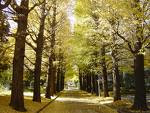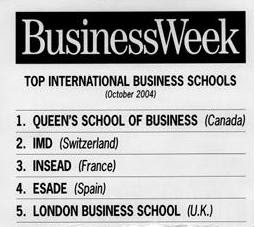Foundation
Leiden University is the oldest university in the Netherlands. It was founded in February 1575, as a gift from William of Orange to the citizens of Leiden who had withstood a long siege by the Spaniards.
University Motto: Praesidium Libertatis
It was the first university in the Netherlands where freedom of belief and religion was practised, as reflected by the university’s motto, Praesidium Libertatis, Bastion of Liberty. It was in this atmosphere of freedom of speech that philosophers like Spinoza and Descartes were able to develop their ideas.
Several great scholars and scientists have brought fame to Leiden University. For example, the illustrious Dutch professor of medicine, botany and chemistry, Herman Boerhaave (1668-1738), who was the first in Europe to emphasise the importance of the natural sciences for the study of medicine. More recently, the Spinoza Award, the most prestigious Dutch academic award, granted by the Netherlands Organization for Scientific Research (NWO), has been presented to professors from Leiden University 9 out of 36 times.

Leiden University anno 2005
In Leiden there are approximately 17,000 students and 4,000 staff members. The University consists of nine faculties, a School of Management and a School of Education. The University houses faculties of Archaeology, Arts, Creative
and Performing Arts, Law, LUMC (Leiden University Medical Center), Mathematics and Natural Sciences, Philosophy, Social and Behavioural Sciences, and Theology.
The faculties offer a varied range of bachelor’s, master’s and PhD programmes. In addition, three other units offer post-academic training: the Institute for Environmental Sciences (CML), the School of Education (ICLON) and Campus The Hague. The latter specialises in post-academic training in the field of law and political science for those working in the public sector, the legal sector or the corporate world.

Guiding Principles
The three guiding principles of the University are:
an international orientation;
the research-intensive character of the University; and
maintaining the quality of education and research.
Focusing on Talent
Central to these principles is the issue of talent. In the coming years, the University intends to make major contributions to society in the areas of prosperity, well-being and culture. Talent is indispensable to the realisation of that ambition. To this end, the University is committed to both recruiting and developing talent. This will involve secondary school pupils, university students, and young researchers and academics.
Collaboration with other Research Universities
Accordingly, Leiden University is aiming for an internationally recognised position as a top-ranking research-intensive university within the European Higher Education and Research Areas. Leiden University already has a top position in a great many fields, including natural sciences, life sciences (the so-called Red Biotech), medicine, arts, social and behavioural sciences, international law, astronomy and non-Western languages.

With this aim of promoting fundamental research, Leiden University entered into an alliance with eleven other leading universities in Europe to form the League of European Research Universities (LERU). These universities are: Cambridge, Edinburgh, Geneva, Heidelberg, Helsinki, Karolinska Institutet, Leuven, Milan, Munich, Oxford and Strasbourg. The League has acquired six new members as of 1st January 2006. These new members are: Amsterdam University, Lund University (Sweden), University College London, University Paris-Sud 11, Utrecht University and Zurich University (Switzerland). Leiden University is one of the founders of LERU.
In addition, Leiden University has reached agreements with numerous universities worldwide for the purpose of facilitating cooperation and the exchange of students and staff.
The University positions its degree programmes in an international context and guarantees their quality and level in accordance with internationally accepted norms. Graduates are fully equipped to embark on both master’s and PhD degree programmes abroad.

Faculties
Leiden University has nine faculties which are made up of several departments. Together they offer about 50 bachelor's programmes and almost 100 master's programmes.
- Archaeology
- Arts
- Creative and Performing Arts
- Law
- Medicine / Leiden University Medical Center (LUMC)
- Philosophy
- Religious Studies
- Science
- Social and Behavioural Sciences

Leiden University ranked 84th in the 2007 THES-QS World University Ranking
Leiden University ranked 64th in the 2008 THES-QS World University Ranking
Leiden University ranked 60th in the 2009 THES-QS World University Ranking
Leiden University ranked 82nd in the 2010 QS World University Ranking
Leiden University ranked 88th in the 2011 QS World University Ranking























































